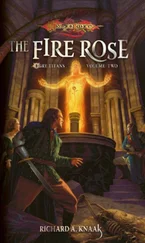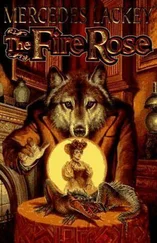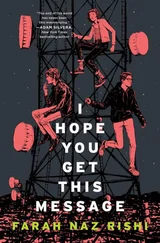Within Russia, alienation from the West has had the effect of rallying the bulk of the population around the flag, the Kremlin and Putin. The Western insistence that isolationist measures are directed against Putin’s policies rather than the Russian people is not cutting much ice. Most Russians see Western attempts at isolating the Kremlin as a proof of the United States and its allies being Russia’s historical competitors, and the Kremlin, to them, becomes a symbol of national resistance. True, this image, spread by state-controlled television, is not shared by the 20 percent or so who remain committed to Russia’s European/Western vocation, but it rings many bells with the rest of the population. For the Kremlin, history is a very powerful ally. It is also joined by another highly improbably ally, economics.
Economic sanctions
Western disapproval of Russian policies in Ukraine did not remain symbolic for long. In July 2014 real punitive measures came. The aim of the “sectoral” sanctions, covering banking, high technology and other sectors of the economy, was to put pressure on members of Putin’s inner circle, who were known to have substantial assets in the West; pinch hard the oligarchs who were used to borrowing in the West to keep their empires going; target several branches of the Russian economy as a whole, particularly the defense industry and oil exploration, by denying high-technology transfers to them; place Crimea off limits to international business; and, eventually, bring home to ordinary Russians that the Kremlin policies which they supported en masse carried a cost that they now had to bear.
The immediate result of these steps was manifold. The inner circle clung even closer to Putin: the sanctions have become a loyalty test, which they were all determined to pass. They were duly rewarded for their losses by new opportunities in Russia. For some, Western censure came as a badge of distinction which protected them from the president’s displeasure on other grounds. The oligarchs faced a choice between staying in Russia and moving out. Some chose the latter, but most stayed: rather than being the real owners of their holdings, they were actually managing them on the Kremlin’s behalf. The economy was offered the option of import substitution, including as a result of Russia banning food supplies from the sanctioning countries, and Crimea received an influx of federal transfers. As for the ordinary Sergeis and Natalias, they suddenly discovered that they were Russians.
Western sanctions, of course, had a major impact on the Russian economy. They added to the structural economic crisis that the country had entered in 2013. Stagnation turned into recession in the fall of 2014 as a result of the sharp drop in the price of oil, which continued to slide downward in 2015 and 2016. The lack of Western investment and technology transfers and the inability to raise finance in Western money markets are not the most serious elements of the current Russian economic recession, but they add to the severity of the crisis. This economic crunch remains the main hope of Western governments: that the Kremlin runs out of reserves to keep the country running and to maintain even the minimum support of the population, and so will have to start rolling back its policies.
This outcome will become evident only in several years’ time: for the present moment, Moscow has enough resources to stay the course, even if some expenses have been trimmed or pushed back. The crisis is forcing the Kremlin toward hard choices in its economic policy, essentially between a more liberal approach to unchain the energies of the national business community, on the one hand, and an effort to mobilize all available resources under strict government control, on the other. Neither option, however, promises a softening of Moscow’s policies toward the West: a replay of the 1980s situation which thrust Mikhail Gorbachev into the hands of the Soviet Union’s Western creditors, and constrained Moscow to make geopolitical concessions, is unlikely this time around. 2015 was a difficult year for the Russian companies which have had to repay Western loans, but as a result the country’s corporate debt has markedly decreased.
While they are not part of a formal response to Russian actions in Ukraine, the European Union’s steps to reduce dependence on Russian energy supplies have resulted in the forced abandonment of Gazprom’s South Stream project which would have supplied gas to Southern and South-Eastern Europe. An expansion of Gazprom’s other project, the North Stream, which connects Russia and Germany across the Baltic Sea, which Germany wants, is under pressure within the EU and from across the Atlantic. In conjunction with other measures, Gazprom’s share of the EU’s gas market has shrunk considerably. The energy relationship, the mainstay of EU–Russian trade, has frayed.
Support for eastern NATO countries
Next to putting pressure on Russia, supporting NATO allies on its borders has been a priority for Western leaders. In the wake of the Ukraine crisis, the three Baltic States – Estonia, Latvia and Lithuania – felt they might be the next targets of “Russian aggression” – a striking expression of their lack of confidence in the alliance which they had joined a decade before. Poland also felt exposed. NATO, at its September 2014 summit in Wales, essentially reclassified Russia as a problem rather than a partner and decided to build a rapid reaction force to deal with contingencies along its eastern frontier and to enhance the heretofore very light alliance presence in the eastern member states. Following that, some US heavy weapons were positioned in those countries, and NATO exercises were held there, sometimes virtually right across the border from Russia. As a next step, the United States will keep a rotating – and thus quasi-permanent – troop presence in the eastern NATO countries.
There is no evidence to suggest that Russia harbored any designs on the former Baltic republics of the Soviet Union, not to mention the former Soviet satellite Poland. NATO steps, however, are designed to provide a degree of reassurance to the eastern allies that they will not be left one-on-one with Russia in the event of a crisis. This is reminiscent of the Cold War situation, when US boots on the ground, rather than a formal pledge under Article 5 of the Washington Treaty, were considered a credible guarantee – a “tripwire” – of defense in the hour of need. Even that, however, was not enough then: remember the never-to-be-answered question of whether the United States would risk losing Chicago to defend Hamburg or West Berlin.
At the same time, expansion of NATO military infrastructure, not just the alliance’s “political” membership, toward the Russian border is leading to consolidation of a new permanent stand-off between NATO and Russia. The “Suwalki gap” – 70 kilometers or so of Polish and Lithuanian territory which separate Kaliningrad from Belarus which, if controlled by Russian forces, could cut off the Baltics from mainland NATO territory – is taking the place in NATO’s strategic minds of the famous Fulda gap on the former inner-German border. Add US missile defenses in Poland and Romania, and US Navy ships patrolling the Baltic and the Black Sea, and the message to Russia cannot be ignored.
The message, however, is inevitably read in Moscow not so much as a warning to keep off NATO territory as the United States and its allies demonstrating their capacity to apply military pressure on Russia, now from very close range. The Russian General Staff, which before the Ukraine crisis had regarded Russia’s western border as relatively safe, is consequently revising the armed forces’ posture, deployment pattern and military exercise scenarios. Kaliningrad, after all, is much bigger than West Berlin, and there are no constraints regarding the deployment there of powerful Russian weapons systems, including missiles. This, in turn, would only make the Baltic countries and Poland more nervous.
Читать дальше












